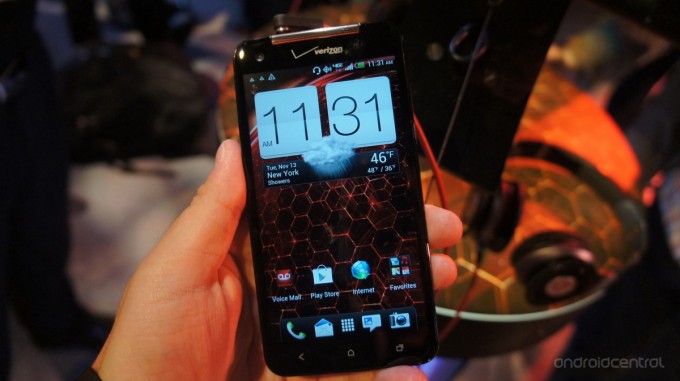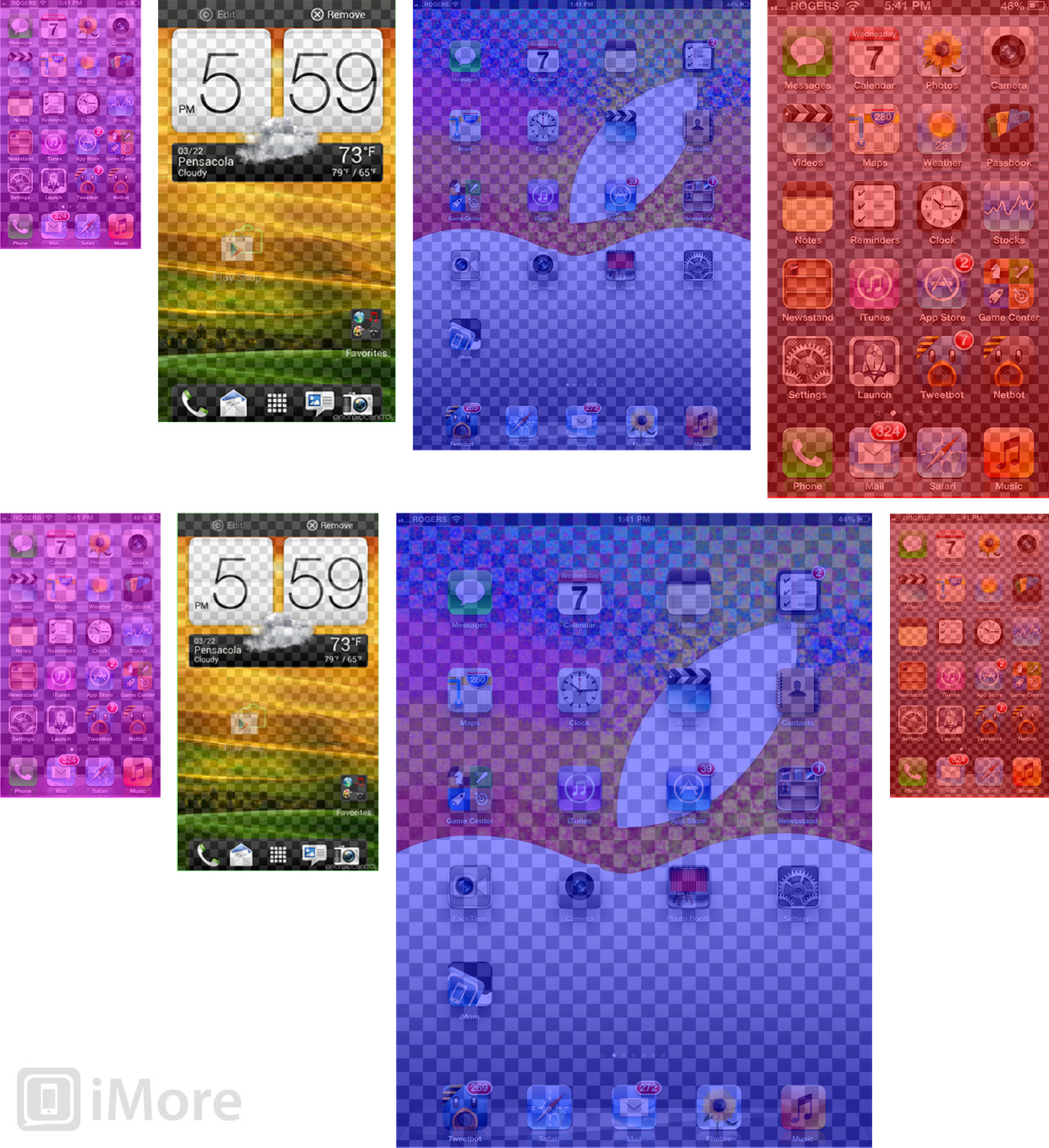5-inch 1080p, 440ppi Android phones coming to the U.S., blowing past iPhone 5 Retina display

HTC is showing off the Verizon Droid DNA today at the special event in New York City, and the big news -- the HUGE news -- is the size and density of their display: a 5-inch fully 1920x1080p at a positively pornographic 440ppi. HTC has always loved pushing the envelop when it comes to specs, and this is obviously no exception. Back when Apple launched the iPhone 4 with Retina display, its 960x640 at 326ppi screen was well beyond anything else on the market, and it stayed that way for a long time. Even with the iPhone 5's 1136x640, still 326ppi screen, HTC is now far, far ahead.
If Apple wants to once again take the screen density crown, and keep app compatibility the same way they did when they went to @2x pixel-doubled Retina, they'd have to switch to @4X pixel-quadrupled super-Retina. That'd be 2272x1280, and unless they increase the physical size of the display, an even more ludicrous 652ppi.
Powering a display that big for any length of time is non trivial as well. The iPad 4's 2048x1536, 264 ppi Retina display required an increase in thickness and weight and a battery that wouldn't be out of place on a laptop. The iPad mini couldn't be made with Retina display.
Here's what those displays do and would look like, both in terms of pixel count and density and physical scale (44x44 pixel grid overlay). From left to right, iPhone 5 (purple), Droid DNA (green), iPad 4 (blue), theoretical iPhone @4x (red).

HTC is using a 2020 mAH battery to power the 141 x 70.5 x 9.73 mm, 138 grams Droid DNA. Apple, by contrast, is using a 1440 mAH battery, for 123.8 mm x 58.6 mm x 7.6 mm, 112 gram iPhone 5. However, the Droid DNA is using the same processor as the Nexus 4, a 1.5GHz quad-core Qualcomm Snapdragon S4 APQ8064 and MDM9615m, despite pushing 1920x1080 rather than 1280x768. It'll be interesting to see what that does for performance, since Apple's Retina devices always seem to take a performance hit for the first generation, and that's usually with all new (Apple A4) or beefed up (Apple A5X) processors.
Apple's priorities seem to be on making thinner, lighter, better devices, not bigger or denser ones, so this might well be a battle Apple is happy to sit out. Arguably, any increase in density beyond 300 ppi is lost on most human eyes anyway. Just like cameras, where better sensors are a smarter play than more megapixels, we might be hitting diminishing returns when it comes to displays.
Still, for people who want the biggest, densest phone screens possible, with the HTC Droid DNA on Verizon, there's a new monolith in town.
Master your iPhone in minutes
iMore offers spot-on advice and guidance from our team of experts, with decades of Apple device experience to lean on. Learn more with iMore!
Mobile Nations' Phil Nickinson was at the Verizon event today, make sure you check out his full HTC Droid DNA hands-on.

Rene Ritchie is one of the most respected Apple analysts in the business, reaching a combined audience of over 40 million readers a month. His YouTube channel, Vector, has over 90 thousand subscribers and 14 million views and his podcasts, including Debug, have been downloaded over 20 million times. He also regularly co-hosts MacBreak Weekly for the TWiT network and co-hosted CES Live! and Talk Mobile. Based in Montreal, Rene is a former director of product marketing, web developer, and graphic designer. He's authored several books and appeared on numerous television and radio segments to discuss Apple and the technology industry. When not working, he likes to cook, grapple, and spend time with his friends and family.
